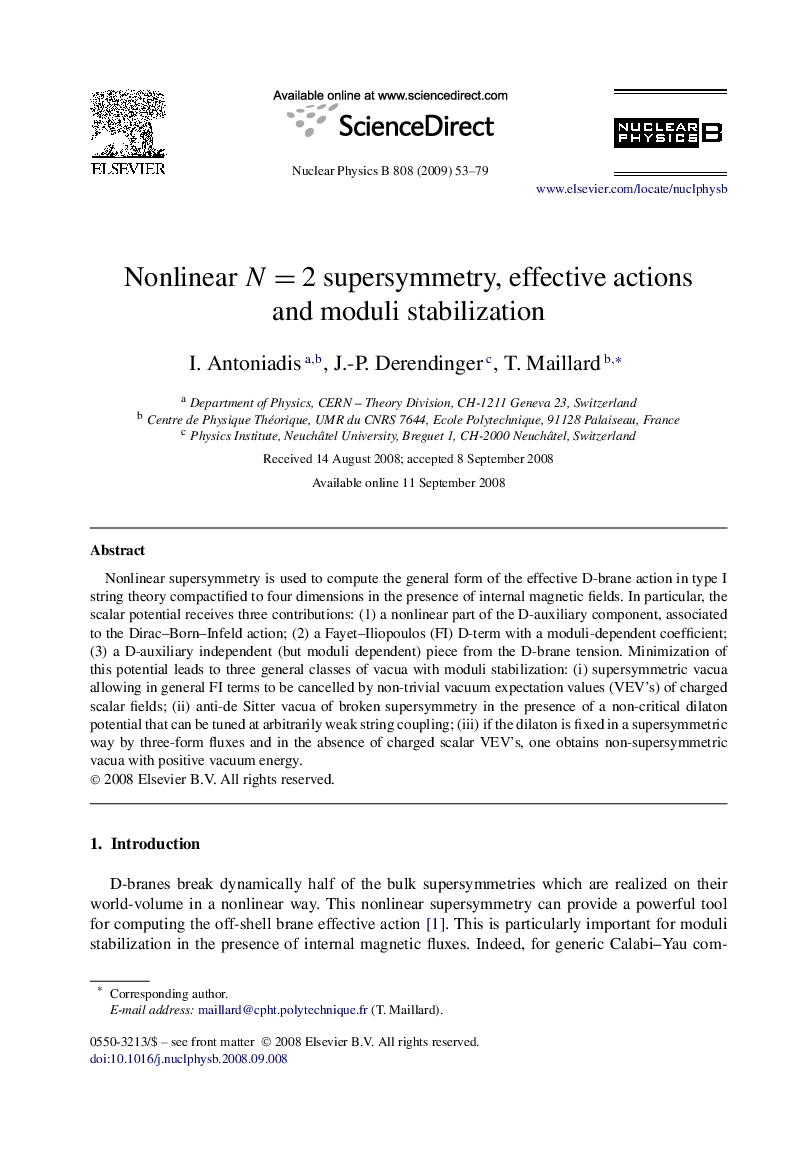| Article ID | Journal | Published Year | Pages | File Type |
|---|---|---|---|---|
| 1843696 | Nuclear Physics B | 2009 | 27 Pages |
Nonlinear supersymmetry is used to compute the general form of the effective D-brane action in type I string theory compactified to four dimensions in the presence of internal magnetic fields. In particular, the scalar potential receives three contributions: (1) a nonlinear part of the D-auxiliary component, associated to the Dirac–Born–Infeld action; (2) a Fayet–Iliopoulos (FI) D-term with a moduli-dependent coefficient; (3) a D-auxiliary independent (but moduli dependent) piece from the D-brane tension. Minimization of this potential leads to three general classes of vacua with moduli stabilization: (i) supersymmetric vacua allowing in general FI terms to be cancelled by non-trivial vacuum expectation values (VEV's) of charged scalar fields; (ii) anti-de Sitter vacua of broken supersymmetry in the presence of a non-critical dilaton potential that can be tuned at arbitrarily weak string coupling; (iii) if the dilaton is fixed in a supersymmetric way by three-form fluxes and in the absence of charged scalar VEV's, one obtains non-supersymmetric vacua with positive vacuum energy.
